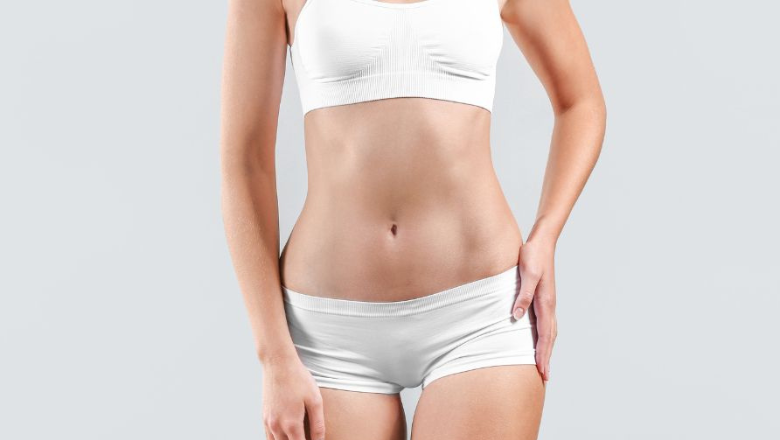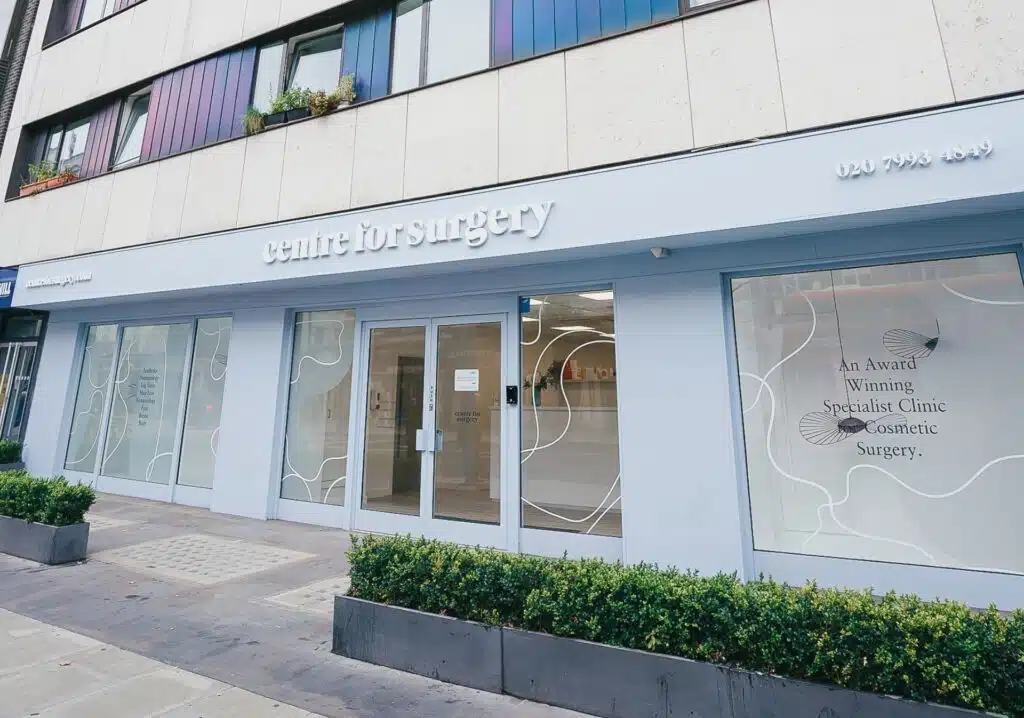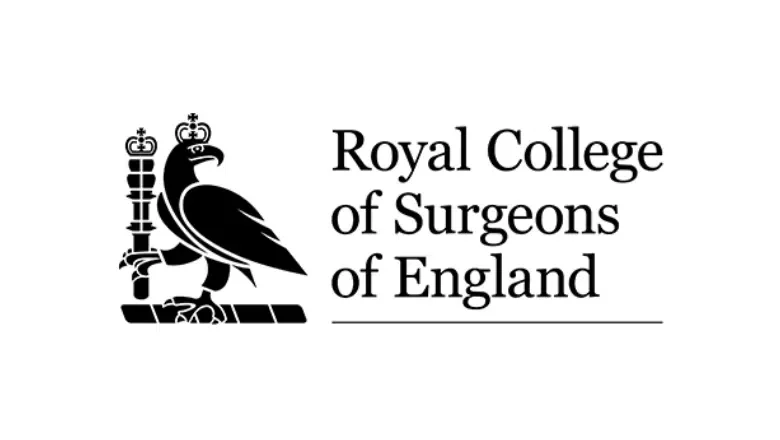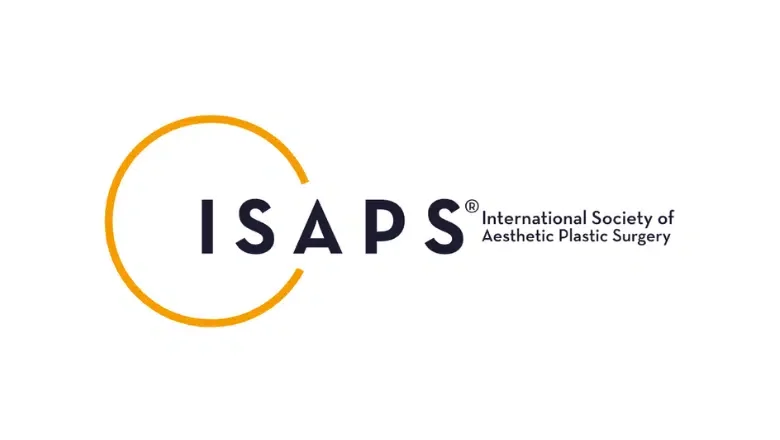Vaginal Rejuvenation: London & UK
Vaginal rejuvenation or “designer vagina” treatment is increasingly requested by many women who have undergone changes caused by childbirth or the natural ageing process. Both the appearance and function of the vagina can be significantly affected, leading to soft tissue laxity, stress urinary incontinence, pelvic organ prolapse or vaginal atrophy. Vaginal rejuvenation is a broad term to capture a number of potential non-surgical and surgical treatments that can lead to an improvement in vaginal appearance and tightness. The increased vaginal tightness can also improve many functional symptoms, such as stress urinary incontinence and pelvic organ prolapse.
RELATED: 5 Reasons Why Women Choose Vaginal Rejuvenation Procedures
Women with vaginal laxity most commonly notice a loss of sensation during intercourse, urinary incontinence or pelvic organ prolapse due to a loss of structural support brought about most commonly by childbirth but also the natural ageing process. Urinary incontinence can be particularly disabling and can be one of two types:
- Stress incontinence (leakage of urine when coughing or sneezing)
- Urge incontinence (need for rushing to the toilet without warning)
Non-surgical treatments for vaginal rejuvenation include both Votiva and laser gynaecology treatments. The surgical treatments for vaginal rejuvenation are broad and can include a labiaplasty to reduce and reshape the labia, vaginoplasty to tighten the vaginal walls or a perineoplasty to tighten the area between the vagina and anus. Our expert female gynaecologist will be able to advise you on the best options after a full clinical assessment. Our central London facility at 95-97 Baker Street is state-of-the-art for non-invasive gynaecology treatments.
What is Vaginal Rejuvenation?
Vaginal rejuvenation encompasses a series of medical treatments aimed at revitalising and restoring the vaginal area for both functional and aesthetic reasons. This process has gained popularity as a means of addressing various concerns that might arise due to natural aging, childbirth, or hormonal changes, which can affect the structural integrity and appearance of the vaginal tissue.
RELATED: What Are the Different Types of Vaginal Rejuvenation Procedures?
The essence of vaginal rejuvenation lies in its ability to offer a renewed sense of confidence and comfort. Treatments under this category can vary widely, including surgical options like vaginoplasty, which tightens the vaginal canal, and labiaplasty, which modifies the outer appearance of the vagina for a more symmetrical look. Additionally, there are non-surgical alternatives that utilise energy-based devices, such as lasers and radiofrequency, to stimulate collagen production, enhancing tissue elasticity and firmness.
These procedures aim to alleviate a range of symptoms, from discomfort during physical activities and intimate relations to urinary incontinence, contributing to an improved quality of life. Furthermore, by addressing aesthetic concerns, vaginal rejuvenation can help individuals feel more at ease with their bodies, boosting self-esteem and overall well-being.
Benefits of Vaginal Rejuvenation
Vaginal rejuvenation, both surgical and nonsurgical, can provide a number of benefits depending on the individual patient’s needs and goals. Some of the most common benefits of vaginal rejuvenation include the following:
Improved sexual function and satisfaction
Vaginal rejuvenation can improve sexual function and increase sexual satisfaction by tightening the vaginal walls, reducing pain during intercourse, and improving clitoral sensitivity.
Reduced symptoms of vaginal laxity and dryness
Vaginal rejuvenation can improve the tightness of the vaginal tissue and reduce symptoms of vaginal laxity and dryness, which can be caused by ageing, childbirth, and other factors.
Improved confidence and self-esteem
Vaginal rejuvenation can improve the appearance of the genital area, leading to increased confidence and self-esteem.
Reduced pain and discomfort
Vaginal rejuvenation can reduce pain and discomfort caused by issues such as tearing or stretching during childbirth or by enlarged labia.
RELATED: Vaginal rejuvenation after pregnancy – benefits of labiaplasty and vaginoplasty
Does vaginal rejuvenation work?
Vaginal rejuvenation, both surgical and non-surgical, can provide benefits to patients depending on their individual needs and goals. However, the efficacy of vaginal rejuvenation may vary based on several factors, including the type of procedure performed, the patient’s anatomy, and the patient’s expectations.
In general, surgical methods of vaginal rejuvenation tend to have more dramatic and long-lasting results compared to nonsurgical methods. Non-surgical methods may provide some improvement, but the results may be less noticeable and may not last as long.
RELATED: What is the difference between vaginal rejuvenation and labiaplasty?
Am I Suitable for Vaginal Rejuvenation?
Vaginal rejuvenation treatments encompass both non-surgical vaginal tightening treatments and surgical procedures, and the most appropriate option will be determined after a face-to-face consultation with an expert cosmetic gynaecologist at our London clinics.
Ideal candidates for vaginal rejuvenation include:
- Patients in a good state of physical and mental health
- Patients who are concerned by either the appearance of their vaginal area or are having functional symptoms such as urinary incontinence or pelvic organ prolapse as a result of childbirth or from advancing age
- Patients who have a good understanding of the proposed treatment and what can be achieved with realistic goals for treatment.
Vaginal Rejuvenation Surgical Options
Surgical methods of vaginal rejuvenation are procedures that aim to improve the appearance, function, and/or sensations of the female genital area through surgical intervention. The different surgical methods of vaginal rejuvenation include:
Vaginoplasty
A surgical procedure that tightens the vaginal walls and can improve sexual function and satisfaction. This procedure involves removing excess vaginal tissue, tightening the remaining tissue, and bringing the muscles of the vaginal wall back together to create a tighter vaginal canal.
Perineoplasty
A surgical procedure that repairs and rejuvenates the perineum, the area between the vaginal opening and the anus. This procedure can address issues such as tears or stretching that may occur during childbirth, or to tighten the vaginal opening for cosmetic or functional reasons.
Labiaplasty
A surgical procedure that reshapes and reduces the size of the labia minora (inner vaginal lips) for cosmetic or functional reasons. This procedure can address issues such as asymmetry, elongation, or discomfort caused by large or irregular labia.
Clitoral hood reduction
A surgical procedure that reduces the size of the clitoral hood can improve sexual stimulation. This procedure involves removing excess skin that covers the clitoris to increase the sensitivity of the clitoris.
Vaginal Rejuvenation Non-Surgical Options
Nonsurgical methods of vaginal rejuvenation are procedures that aim to improve the appearance, function, and/or sensations of the female genital area through minimally invasive techniques. The different nonsurgical methods of vaginal rejuvenation include:
Laser vaginal rejuvenation
A minimally invasive procedure that uses laser energy to tighten the vaginal tissue, improve sexual function and sensations, and reduce symptoms of vaginal atrophy.
RELATED: Why Laser Treatments are a Top Choice for Vaginal Rejuvenation
Radiofrequency vaginal rejuvenation
A minimally invasive procedure that uses radiofrequency energy to stimulate collagen production and tighten the vaginal tissue. This procedure can improve sexual function and sensations, and reduce symptoms of vaginal laxity and dryness.
Ultrasound-assisted vaginal rejuvenation
A minimally invasive procedure that uses ultrasound energy to tighten the vaginal tissue and improve sexual function and sensations.
ThermiVa
A minimally invasive procedure that uses radiofrequency energy to tighten the vaginal tissue and improve sexual function and sensations.
Fotona SMOOTH® laser treatment
Centre for Surgery is one of the few providers in the UK to specialise in non-surgical laser gynaecology treatments for common gynaecological concerns. Fotona SMOOTH® laser treatments offer gentle and non-invasive solutions to vaginal problems such as involuntary leakage during coughing and sports activities, loss of vaginal firmness and vaginal dryness and irritation. They are based on a specially engineered, patented laser mode using the award-winning Fotona SP Dynamis laser that works by delivering gentle heat pulses to the vagina, strengthening and improving the tissue quality through the production of new collagen and elastin.
- IntimaLase – vaginal tightening treatment
- IncontiLase – stress urinary incontinence treatment
- ProlapLase – pelvic organ prolapse treatment
- RenovaLase – treatment for genitourinary syndrome of menopause / vaginal atrophy
Fotona SMOOTH® treatments are noninvasive, gentle, painless, and quick ambulatory procedures that can also help patients with multiple problems. The Centre for Surgery is home to specialists in laser gynaecology.
How is surgical vaginal rejuvenation performed?
Surgical vaginal rejuvenation refers to a group of surgical procedures designed to improve the appearance and function of the vaginal area. The specific surgical procedures used for vaginal rejuvenation may vary depending on the individual patient’s anatomy and the specific concerns being addressed.
The most common surgical procedures used for vaginal rejuvenation include:
Labiaplasty
This procedure involves reshaping the labia minora (the inner vaginal lips) to reduce their size or to improve their symmetry. Labiaplasty can be performed using various techniques, including trimming, reshaping, and repositioning the labia minora.
Clitoral hood reduction
This procedure involves reducing the size of the clitoral hood to improve sexual sensation and to improve the appearance of the vaginal area.
Vaginoplasty
This procedure involves tightening the vaginal canal to improve sexual function and to treat symptoms of vaginal laxity. Vaginoplasty may involve surgically tightening the muscles and tissues of the vaginal wall and may be performed in conjunction with labiaplasty.
Perineoplasty
This procedure involves tightening the perineum (the area between the vaginal opening and the anus) to improve sexual function and treat symptoms of vaginal laxity.
These procedures are typically performed using general anaesthesia or local anaesthesia with sedation and are performed on an outpatient basis at our state-of-the-art Baker Street clinic in Marylebone. The specific surgical technique used will depend on the individual patient’s anatomy and the specific concerns being addressed.
After surgery, patients will typically experience some level of discomfort, swelling, and bruising. Most patients can return to work and physical activity within several days to several weeks after the procedure, depending on the specific procedure performed and the individual patient’s anatomy and health. Sexual activity may need to be limited for several weeks after the procedure.
How is laser vaginal rejuvenation performed?
Laser vaginal rejuvenation refers to a group of non-surgical procedures that use laser energy to improve the appearance and function of the vaginal area. The specific laser procedures used for vaginal rejuvenation may vary depending on the individual patient’s anatomy and the specific concerns being addressed.
Some common laser vaginal rejuvenation procedures include:
Laser vaginal tightening
This procedure uses laser energy to heat the tissues of the vaginal wall to stimulate collagen production and to tighten the vaginal canal. This can improve sexual function and treat symptoms of vaginal laxity.
Laser labia reduction
This procedure uses laser energy to reduce the size of the labia minora (the inner vaginal lips) to improve their symmetry and appearance.
Laser clitoral hood reduction
This procedure uses laser energy to reduce the size of the clitoral hood to improve sexual sensation and to improve the appearance of the vaginal area.
Laser vaginal rejuvenation procedures are typically performed using local anaesthesia or topical numbing agents and do not require any incisions or stitches. The procedures are performed on an outpatient basis at our Baker Street clinic, and patients can typically return to normal activities within a few days.
Recovery after Vaginal Rejuvenation
The recovery period after vaginal rejuvenation can vary depending on the type of procedure performed, the patient’s anatomy, and the patient’s overall health. In general, most patients can expect some level of discomfort, swelling, and bruising after vaginal rejuvenation.
After surgical procedures, patients may need to take several days off from work and limit physical activity to allow for proper healing. Patients may need to avoid certain activities, such as strenuous exercise, for several weeks after the procedure. Sexual activity may need to be limited for several weeks after the procedure, and patients may need to use lubricants to alleviate discomfort during intercourse.
After non-surgical procedures, patients may experience some level of discomfort but may be able to return to work and physical activity the same day or soon thereafter. Patients may need to avoid certain activities, such as strenuous exercise, for a short period after the procedure. Sexual activity may need to be limited for a short period after the procedure, and patients may need to use lubricants to alleviate discomfort during intercourse.
Risks of Vaginal Rejuvenation
Like any medical procedure, vaginal rejuvenation carries certain risks and potential complications. The specific risks and complications associated with vaginal rejuvenation will depend on the type of procedure performed, the patient’s anatomy, and the patient’s overall health.
Some of the common risks and complications associated with vaginal rejuvenation include:
- Pain and discomfort
- Swelling and bruising
- Bleeding
- Infection
- Scarring
- Numbness
- Poor wound healing
- Changes in sensation
- Reduced sexual satisfaction
- Need for revision surgery
In some cases, surgical procedures may result in complications such as:
- Poor wound healing
- Unsatisfactory cosmetic results
- Adverse reactions to anaesthesia
- Changes in sensation
- Unsatisfactory sexual function
In some cases, non-surgical procedures may result in complications such as:
- Pain and discomfort
- Swelling and bruising
- Changes in sensation
- Unsatisfactory cosmetic results
- Adverse reactions to treatments
- Unsatisfactory sexual function
These risks and complications are not exhaustive, and the specific risks and complications associated with each individual case will depend on several factors, including the type of procedure performed, the patient’s anatomy, and the patient’s overall health.
How Much Does Vaginal Rejuvenation Cost in the UK?
The cost of vaginal rejuvenation in the UK can vary widely depending on the type of procedure performed, the location of the clinic, and the experience and qualifications of the healthcare provider.
RELATED: Vaginal Rejuvenation Cost -What You Need to Know
In general, surgical methods of vaginal rejuvenation tend to be more expensive compared to nonsurgical methods. The cost of surgical procedures can vary depending on the specific procedure.
Vaginal Rejuvenation in London & UK: Discover Excellence at Centre for Surgery
At the forefront of providing exceptional cosmetic treatments across the UK, Centre for Surgery in London stands out for its unparalleled expertise in vaginal rejuvenation. Our clinic is renowned for offering state-of-the-art solutions tailored to meet our patients’ individual needs and expectations. By choosing us, you embark on a journey towards restoring your confidence and well-being with the support of leading specialists in the field.
Why Choose Centre for Surgery for Your Vaginal Rejuvenation?
Expert Care
Our highly skilled professionals are dedicated to providing personalised care, ensuring that each patient receives treatment plans designed to achieve optimal results. Utilising the latest medical technology advancements, we offer surgical and non-surgical options to cater to a wide range of concerns.
Comprehensive Consultation
Understanding the importance of informed decision-making, we offer detailed consultations. During these sessions, we discuss your goals, explain the procedures, and address any questions or concerns, ensuring you feel confident and informed about your treatment choices.
Patient-Centred Approach
At Centre for Surgery, patient safety and satisfaction are our top priorities. We strive to create a comfortable and supportive environment where every individual’s needs are met with compassion and professionalism.
Patient Testimonials
“After much consideration, I chose Centre for Surgery for my vaginal rejuvenation procedure. The difference has been life-changing. Not only have my physical discomforts been alleviated, but I also feel a renewed sense of self-confidence. The team was incredibly supportive throughout the entire process.” – Emma L.
“The professionalism and care shown by the staff at Centre for Surgery were second to none. From the initial consultation to post-treatment follow-up, I felt valued and well-informed. The results have surpassed my expectations, and I couldn’t be happier.” – Sarah J.
“Choosing Centre for Surgery was the best decision I made for myself. The improvement in my quality of life since undergoing vaginal rejuvenation has been remarkable. The team’s expertise and empathetic approach made all the difference.” – Rachel G.
Begin Your Journey with Us
To schedule a consultation and learn more about how vaginal rejuvenation can benefit you, please contact us:
📞 Phone: 0207 993 4849
📧 Email: contact@centreforsurgery.com
For further information about our services, expertise, and what sets us apart, visit our About Us page: About Centre for Surgery.
Explore More with Centre for Surgery
Interested in learning more about our finance options, including 0% APR with Chrysalis Finance? Visit: Finance Options.
For insights into plastic surgery and the latest treatments, our Plastic Surgery Blog offers a wealth of information: Centre for Surgery Blog.
Have questions? Our Clinic FAQs provide answers to common queries: Cosmetic Surgery Frequently Asked Questions.
Discover our Baker Street Clinic in London for a convenient location offering top-notch care: 95-97 Baker Street Clinic.
At Centre for Surgery, we’re committed to providing exceptional care and achieving the best outcomes for our patients. Contact us today to take the first step towards rejuvenation and empowerment.
FAQs
-
What is Vaginal Rejuvenation?Vaginal rejuvenation is a broad term used to describe treatments which are designed to tighten the vaginal wall and the perineal area which leads to an increase in vaginal tone and strength and also an increase in vaginal sensation which is often lost following childbirth. The overall appearance of the external vagina and labia can also be improved through the reduction of the labia minora for both improved aesthetics and function. Excessively long labia can interfere with intercourse and catch on clothing. The external labia can also be made to look neater following traumatic childbirths which resulted in perineal tearing.
-
What are the different kinds of vaginal rejuvenation? Vaginal rejuvenation refers to a group of surgical and non-surgical procedures aimed at improving the appearance, function, and/or sensations of the female genital area. The different types of vaginal rejuvenation include:
Vaginoplasty: A surgical procedure that tightens the vaginal walls and can improve sexual function and satisfaction.
Labiaplasty: A surgical procedure that reshapes and reduces the size of the labia minora (inner vaginal lips) for cosmetic or functional reasons.
Clitoral hood reduction: A surgical procedure that reduces the size of the clitoral hood, which can improve sexual stimulation.
Perineoplasty: A surgical procedure that repairs and rejuvenates the perineum, the area between the vaginal opening and the anus.
Non-surgical vaginal rejuvenation: A group of minimally invasive procedures such as laser vaginal rejuvenation, radiofrequency vaginal rejuvenation, and ultrasound-assisted vaginal rejuvenation, which aim to tighten and revitalise the vaginal tissue without surgery. -
Who is a good candidate for vaginal rejuvenation?Most women who choose to have a vaginal rejuvenation procedure had previously given birth or may have developed changes as a result of ageing. Women who are experiencing symptoms including vaginal laxity, vaginal dryness, urine incontinence, elongated labia or a gaping vaginal opening may be appropriate candidates for a vaginal rejuvenation procedure.
-
Is vaginal rejuvenation safe?When vaginal rejuvenation is performed by an expert cosmetic gynaecologist, the procedure is considered to be very safe. As with any type of surgical or non-surgical procedure, the risk of bleeding, infection, discomfort or scarring is something to be borne in mind when deciding to have vaginal rejuvenation.
-
How long should I wait to have sex after vaginal rejuvenation?The recommended waiting period after vaginal rejuvenation will depend on the type of procedure performed and the individual patient's healing process. Generally, most patients can resume sexual activity within 4 to 6 weeks after vaginal rejuvenation, although this can vary depending on the specific procedure and the patient's healing progress.
-
How long does vaginal rejuvenation last?The longevity of vaginal rejuvenation results can vary depending on several factors, including the type of procedure performed, the patient's anatomy, and the patient's overall health and lifestyle.
In general, surgical methods of vaginal rejuvenation tend to provide longer-lasting results compared to non-surgical methods. The results of surgical procedures can last for several years, although the exact duration may vary depending on the patient's anatomy, health, and lifestyle.
Non-surgical methods of vaginal rejuvenation may provide some improvement, but the results may be less noticeable and may not last as long. The results of nonsurgical procedures can last for several months to a year, although the exact duration may vary depending on the patient's anatomy, health, and lifestyle.













